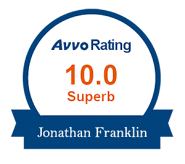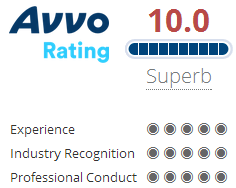According to California law, it is illegal for a driver to operate a vehicle under the influence of alcohol, drugs, or after consuming both drugs and alcohol. Drunk driving entails operating a vehicle while intoxicated with alcohol. Drugged driving involves operating a vehicle while intoxicated with drugs or both drugs and alcohol. Both drunk and drugged driving is risky; however, drugged driving surpasses drunk driving in driver deaths. Both crimes of drunk driving and drugged driving fall under California DUI laws; however, the two crimes are different. If you are facing charges for either drunk driving or drugged driving in Los Angeles, CA, Jonathan Franklin DUI Attorney can help you fight the charges.
California Law on Drunk and Drugged Driving
The California VC 23152 outlines the crime of driving under the influence in general. However, drunk driving and drugged driving are separated by sections. Under section (b) of the statute, it is illegal to operate a vehicle with a blood alcohol content of 0.08% or more. The standard is higher for commercial vehicle drivers who should not operate a vehicle with a BAC that exceeds 0.04%. Section (c) of the statute states that a person addicted to any type of drug should not operate a vehicle. However, this section does not include people who could be taking part in a narcotic treatment program. According to section (f) of the statute, it is illegal for a person who is under the influence of drugs to operate a vehicle.
Under section (g) of the law, you should not operate a vehicle if you are under the influence of both alcohol and drugs. The law defining drugged drive is not specific; what defines being under the influence of drugs?
The law defines a drug as a substance or a combination of substances other than alcohol that can affect your brain, nervous system, or muscles and impair your ability to operate a vehicle. You are impaired if you cannot operate a vehicle the way a cautious person would under similar circumstances. You could be impaired with illegal drugs like heroin, cocaine, or methamphetamine. You could also be impaired with legal drugs like marijuana. It is also illegal to operate a vehicle while intoxicated with prescription medication or over-the-counter medicines like cold medicines and antihistamines.
Most convictions for drugged driving in California revolve around:
- Prescription drugs like Oxycontin, Vicodin, and opiates
- Ambien
- Marijuana
- Methamphetamine
Differences between Drunk and Drugged Driving
Even if drunk driving and drugged driving are under the same DUI law in California, the enforcement of each law is different:
No Legal Limit for Drugged Driving
For drunk driving, California DUI law states clearly that it is illegal for a driver to operate a vehicle if the driver’s BAC is 0.08% or more. However, this is not the case for drugged driving; there is no set legal limit for drugged driving. Experts have never agreed upon the level of drugs in the blood that could make a driver too impaired to operate a vehicle. It is hard to equate drug concentration with the effects on a driver's performance. It becomes even hard because many drugs can impair driving, yet each drug has different effects.
California law only states that it is illegal to operate a vehicle under the influence of drugs, both drugs, and alcohol, or while addicted to a drug. However, if you are receiving treatment for drug addiction under an approved program, it is legal to drive. The law does not outline any legal limit for drugged driving.
Testing for Drunk and Drugged Driving
The initial testing procedures for drunk driving and drugged driving are similar. Testing for intoxication with drugs or alcohol begins with a traffic stop. If a police officer suspects that you are intoxicated, he/she will make a traffic stop. The officer might ask you some questions regarding the consumption of drugs or alcohol. The officer may request you to submit to a PAS (preliminary alcohol testing) test using handheld equipment known as a breathalyzer. The police may request you to perform some field sobriety tests to determine if you are intoxicated.
Officers also look for physical signs of intoxication, including constricted or dilated pupils. If the officers suspect that you are impaired with drugs, they might look for the presence of drug paraphernalia in your vehicle.
If the results from the breathalyzer equipment indicate that your BAC is above the legal limit, you will be guilty of drunk driving. However, if the BAC results are below 0.08% but you still appear impaired, it could be an indication that you are under the influence of drugs. It is not possible to carry out a roadside test to determine the number of drugs in your system.
Drug Recognition Expert
In most cases, when officers rule out alcohol intoxication, but a driver still appears impaired, they may request the help of a drug recognition expert. The expert will come to the scene of the DUI arrest to evaluate the driver. The expert might request the driver to undergo a mouth swab test to determine if there is the presence of drugs in the driver's system. A DRE is a law enforcement officer who possesses special training. He/she can know whether a person has drugs in his/her system. The California Highway Patrol runs the DRE program.
When evaluating to determine whether you are intoxicated with drugs, the DRE will:
- Establish that your BAC does not indicate intoxication with alcohol
- Interview or interrogate the arresting officer
- Examine you and look out for physical signs of intoxication, including the size of your pupil, your pulse rate, presence of drugs in your mouth or nose, the tone of your muscles, and the presence of injection sites on your body.
- The DRE might also engage you in field sobriety tests like one-leg stand test, the finger to nose test, walk and turn test, and Romberg balance test.
- The DRE might also carry out an eye-tracking exam to check for involuntary jerking of the eye
- The expert might engage you in a conversation regarding your drug use and observe your behavior as you respond.
- Finally, the expert will require you to submit to a urine test or a drug test to determine the level of drugs in your system.
It is not possible to detect drugged driving using a breath test like in the case of drunk driving.
It is not mandatory to involve a DRE in a drugged driving case. However, if a DRE is not present, it becomes more difficult to prove intoxication with drugs. However, it is important to note that some officers have received ample training in drug recognition. However, if the arresting officer does not have any training on drug detection, an experienced attorney can file a motion to suppress the evidence or the testimony of the arresting officer. The prosecutor might offer a plea bargain or have your charges dismissed for lack of evidence.
Venue for Impairment Evaluation
The testing and evaluation for drunk driving can take place at the roadside and, in some cases, in a controlled area like the police station. The arresting test can conduct a PAS or a DUI breath test at the roadside. However, a DRE's evaluation normally takes place in a controlled environment like a police station, with proper lighting. In a controlled environment, there is room for better evaluation than at the roadside. Upon evaluating you, the DRE will form an opinion on whether your impairment is resulting from drug use and determine the kind of drugs involved.
Drug Testing Kits
When determining alcohol intoxication, the police rely on field sobriety tests and chemical tests to determine intoxication. In many DUI checkpoints, law enforcement officers use drug-testing kits to determine drug intoxication. By using your saliva, the drug testing kits can identify the presence of drugs in your bloodstream. The testing kits can be able to pick traces of prescription drugs from your system. Other than saliva tests, blood tests can help detect the presence of drugs in your system.
Despite the use of testing kits to determine drugged driving, drugged driving is a lot more complicated than drunk driving. Alcohol is alcohol; the level of intoxication will depend on the amount of alcohol, spirits, or wines that a driver consumes. However, so many drugs can impair a driver’s ability to operate a vehicle. The drugs include legal drugs like prescription medication and controlled substances. While some drugs will impair a driver's ability to drive, some will make a driver more alert. Some positive drugs can neutralize the effects of negative drugs. Different drugs affect people in different ways and at different levels. It is harder to detect and establish drugged driving than drunk driving.
A Negative California Breath Test
In a case of drunk driving, a negative California breath test is an indication that a driver is not under the influence of alcohol. Therefore, a defense attorney can use a negative breath test to defend you against drunk driving. However, in the case of drugged driving, a negative breath test will support the prosecutor’s evidence. It will help to reinforce the reason why the arresting officer believed that you were under the influence of drugs.
The officer will point out that the negative breath tests are an indication that alcohol did not account for your impairment symptoms; therefore, the officer will point out that there must have been positive drug use. The prosecutor will use this testimony against the defendant, especially if the defendant tries to cite a lack of probable cause as a legal defense for DUI.
Blood Test Results for Drugged Driving
In most cases, blood testing is not necessary while determining drunk driving. However, if a driver is unconscious and unable to submit to testing for drunk driving, a blood test would be necessary. Blood test mainly comes in handy for drugged driving testing. During trial for drugged driving, a prosecutor might introduce the results obtained from a blood test.
A blood test can be toxicological to help indicate the presence of drugs in the bloodstream. A drug test could also be quantitative to help indicate the level or amount of drugs detected through the toxicology test. A DRE could testify and report that the amount of drugs in a driver's system is consistent with the impairment level of the driver.
No Correlation Between the Presence of Drugs and Intoxication
In the case of drunk driving, there is a correlation between the amount of alcohol in the system and the level of intoxication. However, this is not the case in drugged driving. The presence of drugs in a person's system does not mean that the person is impaired. A proven correlation between the presence of drugs in a person's system and impairment does not exist.
Different people respond differently to drugs; drugs will have more effects on some people than others. Some people tend to develop a tolerance for drugs after using drugs for a long period. Therefore, people who use drugs more may have lesser signs of impairment than people who use drugs on a casual basis. This is not the case with drunk driving; casual alcohol users are likely to have fewer signs of intoxication than chronic alcohol users.
Detection Window for Drugs
The detection window for the presence of alcohol in the blood is much shorter than that of drugs. The detection window refers to the amount of time a drug can stay in a person's urine or blood after consumption. The detection period will be much longer than the period in which you are high on the drug. Therefore, the detection of drugs in your blood or urine is not an obvious indication of impairment.
For instance, if you use marijuana once, it can stay in your blood for up to 24 hours and in your urine for up to 7 days. If you are a regular marijuana user, the drug could linger in your blood for up to 7 days and your urine for up to 100 days. Cocaine could remain in your blood or urine for up to 3 days after use while heroin and opioids could linger in the blood for up to 3 days and in your urine for up to 4 days.
Find a DUI Attorney Near Me
If you are charged with drunk driving or drugged driving, get in touch with a DUI defense attorney to start preparing your defense. If you are in Los Angeles, get in touch with Jonathan Franklin DUI Attorney at 323-464-6700 to evaluate your case and advise you on the way forward.














